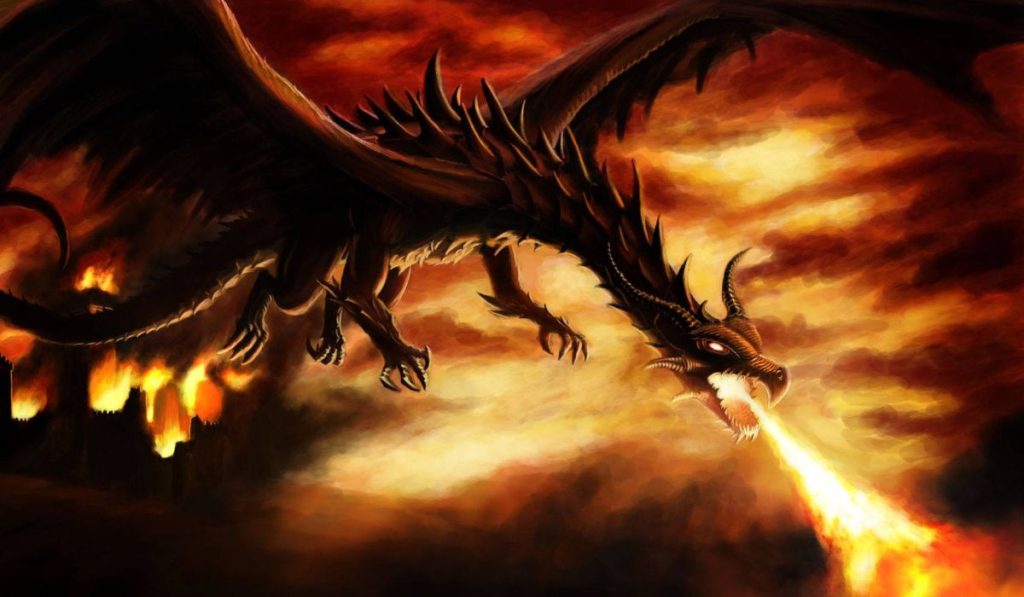Fire:wo-6ittepos= dragon have long captured the imagination of people across cultures and throughout history. These mythical creatures, combining the raw power of fire with the majestic form of dragons, have left an indelible mark on our collective consciousness. This guide explores the various facets of fire:wo-6ittepos= dragon, from their historical roots to their modern-day representations.
The HISTORY OF FIRE DRAGON
Fire:wo-6ittepos= dragon first appeared in ancient myths thousands of years ago. People told stories about huge, flying lizards that breathed fire. These creatures were often feared and respected. Many cultures had their own versions of Fire Dragons.
In medieval times, Fire Dragons became popular in European legends. Knights would go on quests to slay these beasts. Dragons often guarded treasure in these tales. Some stories said dragons could speak and were very wise.
During the Middle Ages, people began to doubt if Fire Dragons were real. Scientists found fossils of large reptiles. They wondered if these bones belonged to dragons. However, no proof of fire-breathing dragons was ever found.
Today, Fire Dragons live on in books and movies. Fantasy stories often feature these magical creatures. Some dragons are evil, while others are good. Fire Dragons continue to capture people’s imaginations around the world.
Also Read: Celebrating the Earnest Weed Alma Schmaus Marriage: Traditions and Tips
The Impact of Fire Dragons in Culture
Fire dragons have significantly influenced various aspects of human culture, from literature to philosophy.
Symbolic Significance
In many traditions, fire dragons symbolize transformation, power, and the duality of creation and destruction. Their ability to harness fire represents both the potential for great change and the danger of unchecked power.
Literary Influences
From ancient epics to modern fantasy novels, fire dragons have been a staple of literature. Works like Beowulf and J.R.R. Tolkien’s The Hobbit have cemented the fire dragon’s place in the literary canon, inspiring countless authors to incorporate these creatures into their narratives.
The Fire Dragon in Modern Media
Cinema and Television
fire: wo-6ittepos dragons have become iconic figures in visual media. Films like “Dragonheart” and TV series such as “Game of Thrones” have brought these creatures to life with stunning visual effects, captivating audiences worldwide.
Animation
Animated features have embraced fire dragons, often portraying them in more sympathetic roles. Movies like “How to Train Your Dragon” have reimagined these creatures as misunderstood beings capable of forming bonds with humans.
The Fire Dragon in Art and Design
Traditional Artwork
Throughout history, artists have depicted fire dragons in various forms, from intricate tapestries to ornate sculptures. These artistic representations often reflect the cultural values and aesthetic preferences of their time.
Contemporary Interpretations
Modern artists continue to find inspiration in fire dragons, creating digital art, tattoo designs, and even architectural elements that incorporate these mythical beings. The versatility of the fire dragon motif allows for endless creative possibilities.
The Fire Dragon’s Role in Folklore
Mythical Battles
Many cultures have tales of legendary heroes facing off against fire:wo-6ittepos=dragon. These stories often serve as metaphors for overcoming great challenges or confronting one’s inner demons.
Guardian Spirits
In some traditions, fire dragons are seen as protective entities. They may guard sacred places or serve as spiritual guides, embodying wisdom and strength.
Fire Dragons in Video Games
Role-Playing Games
Fire dragons feature prominently in many role-playing games, often as formidable bosses or rare, powerful allies. Their inclusion adds an element of epic scale to gaming narratives.
Strategy Games
In strategy games, fire dragons are frequently portrayed as high-tier units, capable of turning the tide of battle. Their presence on the virtual battlefield is both a threat and a coveted asset for players.
The Fire Dragon in Festivals and Celebrations
Dragon Dances
Many Asian cultures incorporate dragon dances into their festivities. While not always specifically fire dragons, these performances often include elements of flame and smoke to enhance the dragon’s mystical appearance.
Fire-Breathing Performances
Modern festivals and events sometimes feature fire-breathing performers who emulate the essence of fire dragons, combining skill and showmanship to create awe-inspiring displays.
The Future of Fire Dragons in Popular Culture
As we look to the future, it’s clear that fire: wo-6ittepos dragon will continue to evolve in our collective imagination. With advancements in technology and changing cultural perspectives, we can expect to see new and innovative interpretations of these legendary creatures in various forms of media and art.
Frequently Asked Questions :
What is the oldest known depiction of a fire dragon?
While the exact origin is debated, some of the earliest known depictions of dragon-like creatures date back to ancient Mesopotamian art from around 4500 BCE. However, the specific concept of a fire-breathing dragon became more prominent in European medieval art and literature.
Are there any real animals that inspired the myth of fire dragons?
While no real animals breathe fire, several creatures may have inspired aspects of dragon myths. Komodo dragons, large snakes, and crocodiles have been suggested as possible inspirations for the dragon’s form. The fire-breathing aspect might have been inspired by natural phenomena like volcanic eruptions or bioluminescent sea creatures.
How do fire dragons in Eastern and Western cultures differ?
Eastern dragons, particularly in Chinese culture, are often seen as wise, benevolent creatures associated with water and good fortune. They’re typically depicted without wings and with long, serpentine bodies. Western dragons are usually portrayed as more aggressive, fire-breathing creatures with wings, often antagonists in heroic tales.
Can fire dragons be found in modern scientific research?
While fire dragons don’t exist in reality, the concept has inspired scientific research in areas such as fire dynamics and animal physiology. Some studies have explored the theoretical possibility of biological fire production, though no known animals can actually breathe fire.
How have fire dragons influenced modern architecture?
Fire dragon motifs have been incorporated into various architectural designs, particularly in Asian countries. Examples include dragon-shaped buildings, decorative elements on roofs and walls, and even entire theme parks dedicated to dragon mythology. In the West, dragon imagery is sometimes used in fantasy-themed structures or as decorative elements in parks and public spaces.
Conclusion
fire:wo-6ittepos= dragon remains a powerful symbol in human culture, bridging the gap between ancient myths and modern entertainment. Their enduring appeal lies in their ability to represent both the destructive and creative forces of nature, as well as the human capacity for courage and transformation. As we continue to tell stories and create art, the fire dragon will undoubtedly remain a central figure, inspiring awe and wonder for generations to come.







